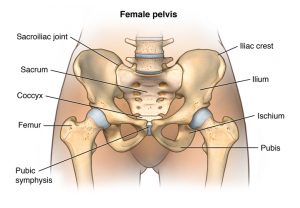Physiotherapy is a useful technique to ensure you stay healthy both during and after pregnancy. There’s little public awareness on the benefits that physio can have, and Becs (interviewed in this video) advocates that all people who have given birth should have a ‘postpartum WOF’ with a physio to ensure everything is in check.
A big thanks to Becs from Leto for taking the time to educate us on this topic!
The Pelvic Floor
In this video Becs talks us through how the pelvic floor changes during pregnancy and childbirth.
Did you know: Pelvic floor muscles stretch up to 250% during a vaginal delivery.
Naturally, it will take the body time to recover from such a large change. Becs often sees people with back and pelvic pain, leakage and prolapse after birth.
Becs explains that to reduce the chances of injury exercising your pelvic floor during pregnancy is vital. Pelvic floor exercises lower the risk of incontinence during pregnancy by 50%, and 30% after pregnancy.

In the video Becs demonstrated which muscles change and stretch during pregnancy and childbirth. The pelvic floor muscle goes right back to the tailbone, so a good cue to think of when doing pelvic floor exercises is to image you are holding in a fart. This can be tricky to get the hang of alone, but a women’s health physio can help you with technique.
What does a postnatal physiotherapy appointment look like?
You can expect your physiotherapist to provide an initial assessment. This can include discussing the type of birth you had and screening you for high risk factors. These check-ups are important because even if you are not currently experiencing symptoms it does not mean you are in the clear – symptoms can develop much later.
One in three people who have given birth will experience urinary leakage – this can start occurring right after birth or develop later in life.
When’s a good time to visit a physiotherapist after birth?
Becs recommends that everyone who has given birth should visit a physiotherapist around 5-6 weeks after birth in order to screen for any potential injuries – even if they are currently asymptomatic.
Is this publicly funded?
Unfortunately this is not currently funded in New Zealand, which means you will have to pay for treatment yourself. If you have had a big birth trauma you can be referred within the public health system, although there are often wait times.
In France ‘postpartum WOF’ check-ups are routine and publicly funded. Other areas of the world such as the UK are moving towards a publicly funded model too.
It would be amazing to see this type of preventative care funded in New Zealand as cost is a significant barrier for many.
Useful links
Antenatal & Postnatal WOFs at Leto
“It’s time to talk about bodies after birth, and not just stretch marks” – fantastic article from The Spinoff created in Partnership with Women’s Health Action.
“Why are so many birth injuries not covered by ACC?” – another article by The Spinoff discussing the current lack of public funding for birth injuries.
Perineal injuries during childbirth: A guide to ACC cover